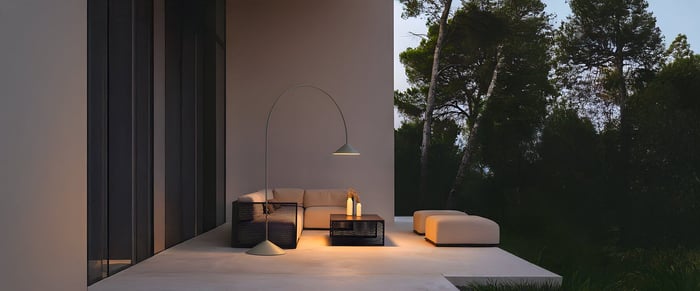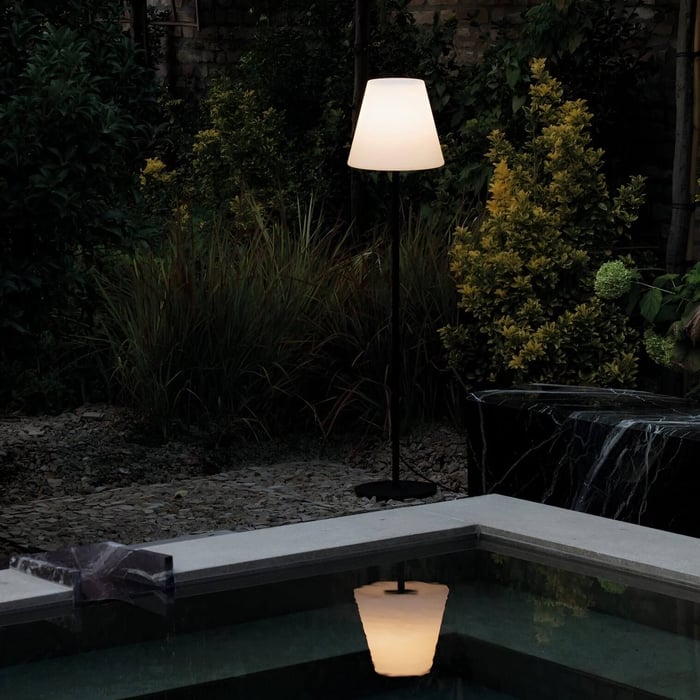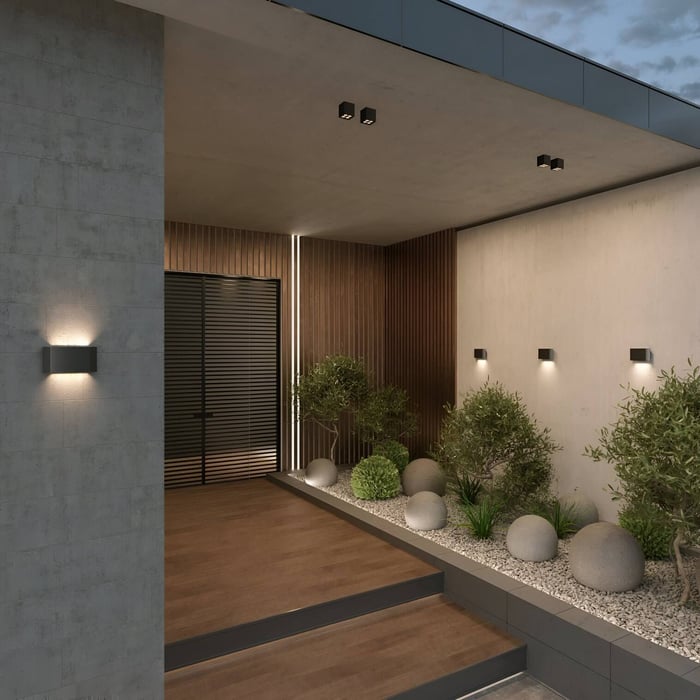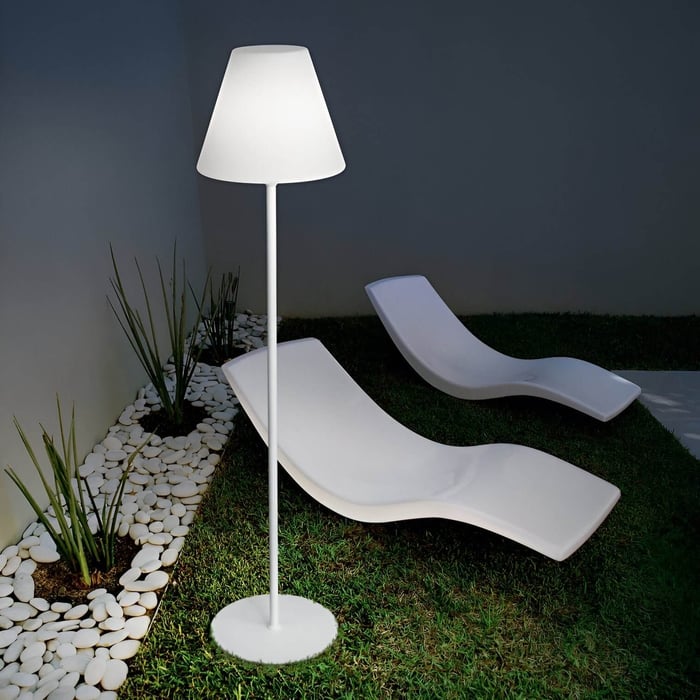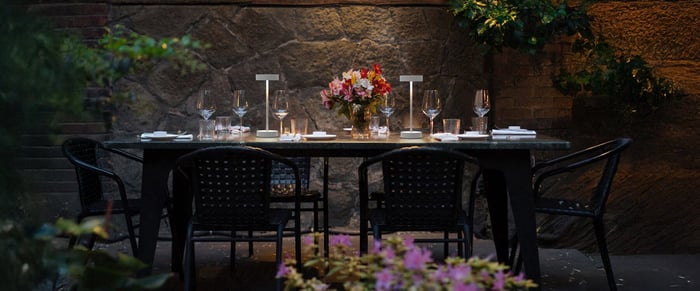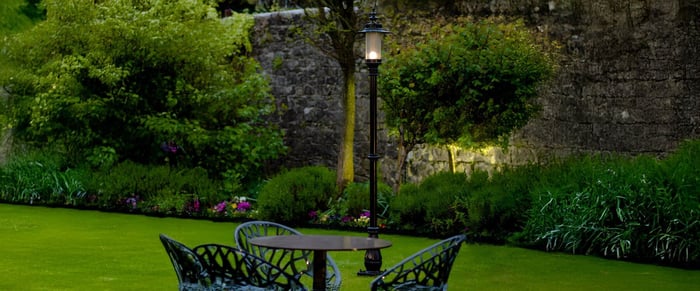Introduction
Outdoor floor lamps are no longer reserved for lavish garden projects or boutique hotels, they’ve become a staple in residential exterior design. As patios, terraces, and landscaped gardens evolve into year-round living areas, the demand for well-crafted, design-forward outdoor lighting continues to rise. These fixtures serve both form and function, casting ambient light while anchoring visual zones in open-air environments.
From creating mood to improving safety, outdoor floor lamps offer unmatched versatility. But they shine brightest when layered thoughtfully with Outdoor Downlights and Outdoor Spotlights, each serving a unique lighting purpose. This guide explores how to choose the best floor lamp for your space, what finishes stand up to the elements, and how to combine different outdoor lighting types to bring depth, structure, and atmosphere to any exterior setting.
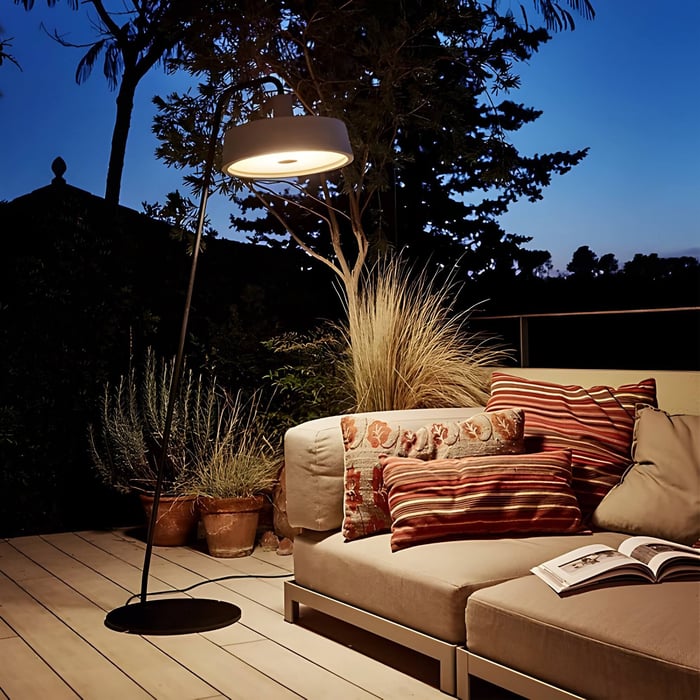
Why Outdoor Floor Lamps Matter in Exterior Design
Unlike overhead fixtures or wall-mounted options, outdoor floor lamps bring lighting to human scale. Their presence on a patio or along a pathway frames the environment with elegance and intention. Aesthetically, they add sculptural interest during the day and luminous warmth at night. Functionally, they define circulation zones and illuminate seating areas without glare.
They excel in low-glow applications, ideal for intimate gatherings or solo outdoor lounging. Unlike Outdoor Downlights, which wash surfaces from above, or Outdoor Spotlights, which draw attention to focal points, floor lamps deliver ambient light from within the landscape itself. Their positioning invites interaction and creates layered pools of illumination that feel intentional and relaxed.
Choosing the Right Outdoor Floor Lamp
Placement Tips by Zone
Where you position outdoor floor lamps directly impacts both the atmosphere and usability of your exterior space. On patios and terraces, place lamps beside seating or lounge furniture to create an enveloping, cocoon-like glow. This fosters comfort and visual separation, especially during evening gatherings. For outdoor dining zones, flank the table with low-glare floor lamps to offer gentle illumination without disrupting conversation or casting harsh shadows on the tabletop.
Along garden paths and lawn perimeters, floor lamps serve as subtle wayfinding tools. They guide both the eye and foot traffic, shaping movement without the rigidity of step lights. By placing them at regular intervals, you can create rhythm and structure across open areas.
Near pool edges or water features, outdoor floor lamps enhance safety while playing off the water’s natural reflectivity, adding dimension and ambience. Select moisture-resistant bases for these areas, and ensure all wiring is suitable for wet environments. In quiet garden corners, a strategically placed lamp offers depth and tranquility. When paired with Outdoor Spotlights angled at ornamental grasses, trees, or sculptures, this creates layered visual vignettes that bring underlit spaces to life.
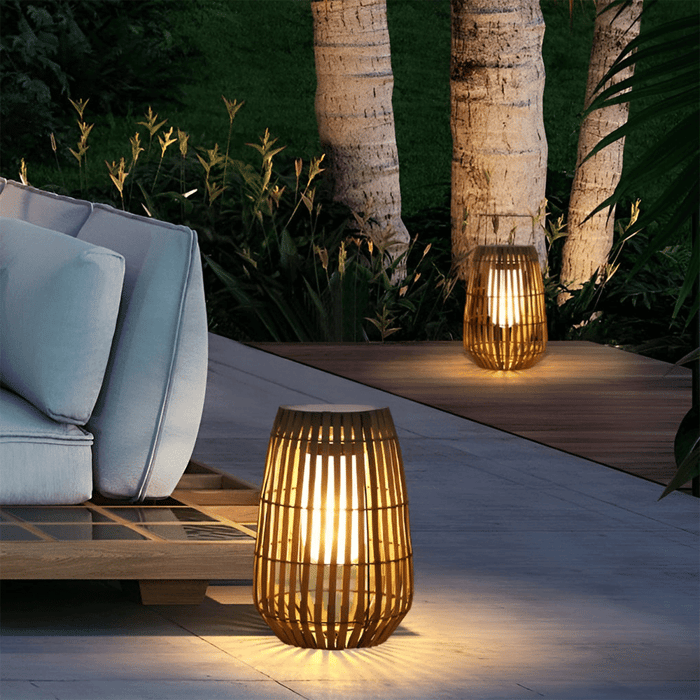
Height, Diffusion & Base Considerations
Choosing the right height and lighting effect is key to maximizing performance. Taller outdoor floor lamps (120–160cm) are ideal for wide coverage across dining or lounge areas, especially in open-plan gardens. Shorter lamps (60–100cm) work best in intimate nooks or along paths, offering targeted pools of light without overwhelming the space.
Diffusion is equally important. Opt for frosted glass, woven rattan, or polycarbonate shades to soften glare and create a warm, inviting glow. These diffusers reduce eye strain and blend harmoniously with natural materials and garden textures.
Base design is crucial for long-term stability. Look for weighted bases, spike-mounted options for soft ground, or tripod-style supports with anti-tip mechanisms. Lamps exposed to wind or uneven surfaces must remain secure to avoid tilting or damage.
For increased functionality, choose adjustable heads that let you alternate between a wide ambient wash and a more concentrated beam. This flexibility allows your outdoor floor lamp to transition effortlessly from decorative accent to task-ready illumination, ideal for everything from casual reading to late-night outdoor entertaining.
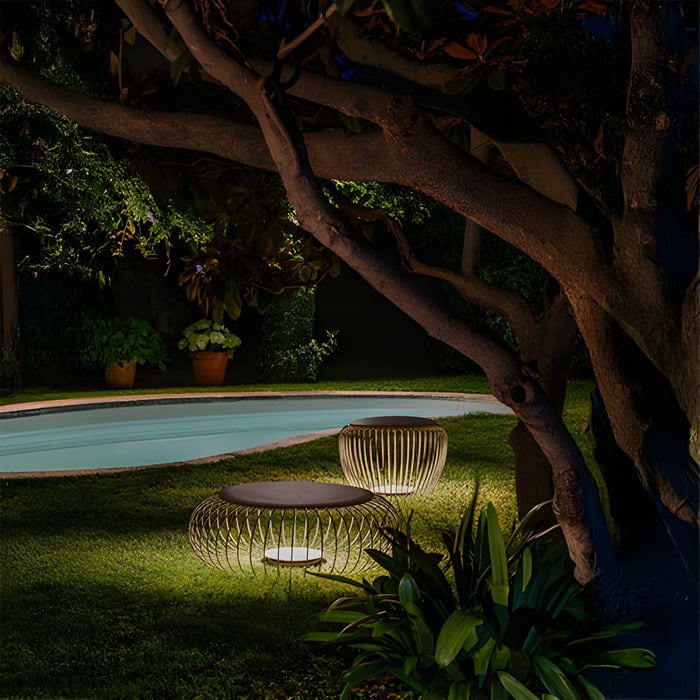
Material & Finish: What Works Best Outdoors
Exterior conditions demand finishes that last. The best outdoor floor lamps use powder-coated aluminium, stainless steel, or composite materials that resist corrosion. Concrete and resin bases offer grounding weight and a contemporary look. Natural rattan or bamboo designs can be striking but require treatment or indoor storage when not in use.
Matte black and bronze finishes remain timeless, blending well with most garden palettes. For bolder statements, oxidised copper or weathered zinc add character and pair beautifully with the muted surfaces of stone walls and timber decking. The goal is to achieve resilience without compromising on visual impact.
How to Layer Outdoor Lighting: Floor Lamps, Downlights & Spotlights
A single lighting type rarely creates a cohesive or visually compelling outdoor environment. For truly atmospheric results, a layered approach is essential. By combining outdoor floor lamps, Outdoor Downlights, and Outdoor Spotlights, you can shape space, highlight architectural and natural features, and control the mood from dusk to late night. Each lighting type plays a distinct role, and when carefully balanced, they produce a nuanced, multidimensional scene that evolves with use.
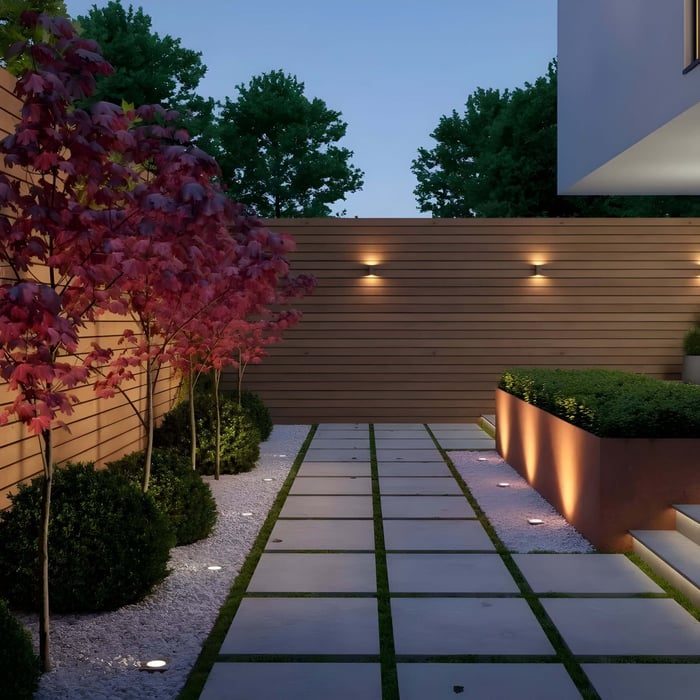
Outdoor Downlights for Wall-Washing Effects
While outdoor floor lamps provide ambient illumination at eye level, Outdoor Downlights introduce architectural clarity. Installed beneath pergolas, soffits, overhangs, or wall brackets, these fixtures cast clean, directional beams that highlight vertical surfaces such as stone walls, brick facades, or rendered finishes. The effect is refined and orderly, ideal for modern exteriors where light is used to define edges and surfaces.
Warm-toned downlights can soften rigid architectural lines, especially when illuminating natural materials like timber or textured plaster. Cooler tones, on the other hand, deliver a crisp, gallery-like sharpness that works well on clean white walls or angular garden structures. Downlights can also enhance safety when used over steps or near outdoor kitchens, combining function with aesthetics.
When layered with outdoor floor lamps, downlights act as the structural framework - the bones - while floor lamps provide the atmospheric layers that soften and humanise the scene. This interplay of overhead precision and grounded ambience brings a sense of spatial order and intimacy that neither could achieve alone.
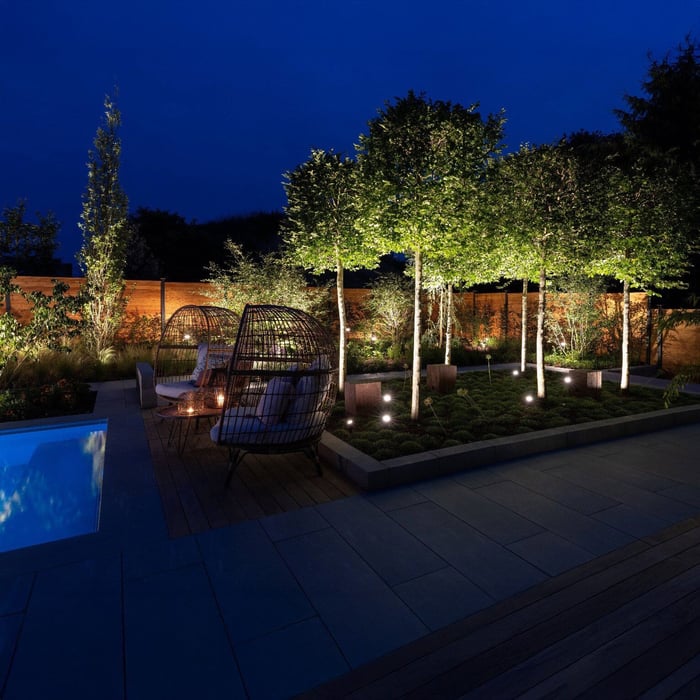
Outdoor Spotlights for Focal Features
Outdoor Spotlights add visual drama. These high-output fixtures are designed to target specific landscape elements, transforming trees, sculptures, water features, or textured planting into illuminated focal points. Their directional beams pierce the darkness, drawing attention to chosen features and creating depth by contrasting light and shadow.
Used sparingly, spotlights introduce visual hierarchy - guiding the eye across the landscape without overwhelming the senses. For example, uplighting a multi-stem tree from below creates stunning verticality, while angling a spotlight across a stone sculpture casts dynamic, shifting shadows that bring it to life.
When used in tandem with outdoor floor lamps, Outdoor Spotlights allow you to control both the vertical and horizontal visual planes. Floor lamps build the base glow that defines functional zones, while spotlights selectively punctuate the layout with visual emphasis. In layered lighting schemes, this trio - floor lamp, downlight, and spotlight = works together to orchestrate ambience, orientation, and attention.
To ensure cohesion, consider lighting intensity and beam spread. A narrow-beam spotlight with a strong lumen output should not compete with a softly diffused floor lamp nearby. Instead, allow each type to operate within its purpose: ambient, structural, or accent. When balanced correctly, the result is a three-dimensional exterior lighting scheme that adapts effortlessly to different activities , entertaining, relaxing, or showcasing the garden after sunset.
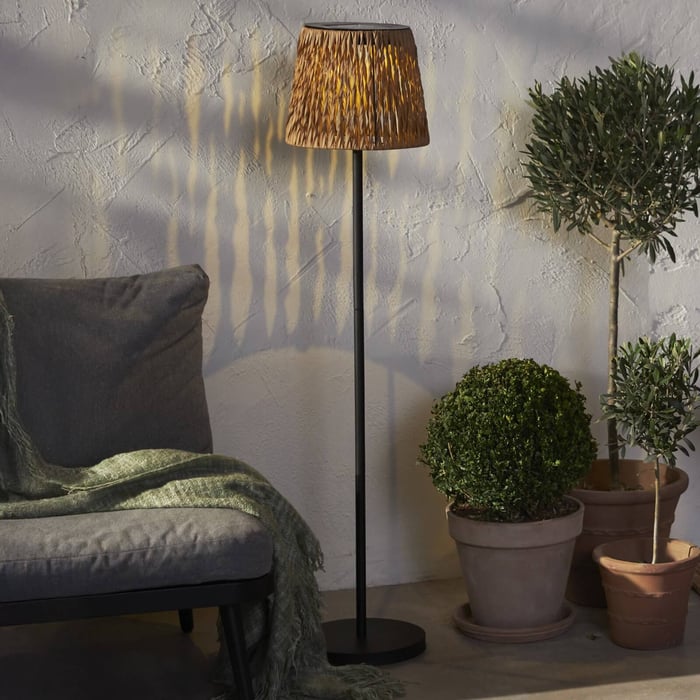
Practical Tips for Outdoor Lighting Longevity
To maximise lifespan, choose outdoor floor lamps with weatherproof ratings of IP44 or higher. This ensures protection against rain and splashes. For coastal areas, opt for marine-grade finishes that resist salt corrosion. Routine maintenance - such as wiping dust from lenses and checking seals - keeps fixtures performing and looking their best.
Store non-permanent lamps indoors during winter months, especially those with woven or textile elements. For solar models, ensure unobstructed exposure to daylight for optimal charging. These habits extend the life of your outdoor lighting investment and ensure consistent performance year after year.
Illuminate Your Outdoor Space with Confidence
Whether you’re designing a tranquil patio, upgrading a garden path, or simply adding depth to an alfresco dining area, outdoor floor lamps offer the flexibility and elegance required for layered exterior lighting. Their ambient presence creates atmosphere, while Outdoor Downlights and Outdoor Spotlights enhance contrast, depth, and safety.
By blending these three lighting types, you can define zones, highlight features, and elevate your outdoor environment into a cohesive and inviting retreat. Explore our full collection of outdoor lighting options - from sculptural floor pieces to architectural downlights - and discover how refined lighting transforms even the simplest space.
